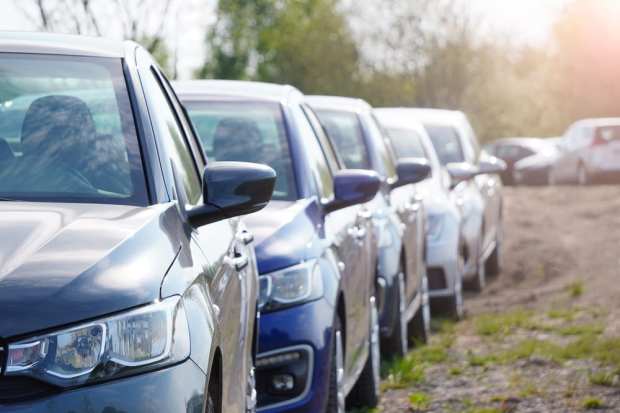Driving Trust In The Cross-Border B2B Used Vehicle Trade

With the rise of eCommerce elevating shoppers’ standards to new heights, digitization has the potential to make even the most notoriously “un-fun” shopping experience a positive one.
Take the used car industry, for example. New online platforms like Carvana have injected some much-needed efficiency into the shopping and browsing experience, thanks to features like on-demand delivery, price comparison tools and enhanced product visuals. But in the business-to-business commerce space, used car purchasing continues to operate in a largely outdated and friction-filled landscape. According to Ryan Davidson, founder and CEO of TRADE X, B2B used car commerce goes from headache to nightmare when the buying and selling process goes cross-border.
Among the biggest pain points are finance and payments, he told PYMNTS in a recent interview. And while sleeker user interfaces can improve the buyer experience, financial functionality is critical to solving areas of friction that can derail B2B cross-border trade for either buyer or seller.
Good, Better, Best: An Evolution
With B2B eCommerce continuing to proliferate across verticals and product categories, the B2B used vehicle market has certainly seen improvement since its early days.
“The history of wholesale distribution started with brick-and-mortar car auctions,” explained Davidson. “From there, it moved from ‘good’ to ‘better’ with the introduction of online bidding software and cameras that allowed dealers to post inventory. Now, a dealer in Chicago could buy a car in California without getting on a plane and actually going to the sale to purchase the vehicle.”
But B2B trade is complex, and digitization cannot address every challenge that buyers and sellers face in the used vehicle market. The progression of the industry from “better” to “best” has been made possible by the introduction of standardized condition reports and stronger arbitration policies that boost confidence for both sides of the transaction, explained Davidson. Even so, many of these transactions continue to occur offline, he noted. When B2B trade shifts into the cross-border realm, the opportunity for friction can expand dramatically, too.
Financial Friction
Though digitizing used vehicle sourcing and procurement can open up the market to global buyers and sellers, it also creates plenty of new challenges for the ecosystem, many of which are related to finances and payment. “You’ve got compliance issues, currency exchange fluctuations, hedging currencies and payment processing,” Davidson said, listing some of the biggest pain points. “Often, letters of credit or wires are used for cross-border payment. There are no real efficient payment processing methods that exist in some of these countries.”
Financing is particularly challenging in this market. Financial institutions (FIs) are “reluctant” to finance the trade of an asset that is either leaving the country or has not yet arrived in the country, Davidson noted.
Overall, the biggest roadblock to smooth cross-border B2B trade of used vehicles is trust. According to Davidson, there is plenty of uncertainty in this space: A buyer may have no way of ensuring that a car will actually be delivered once a bill is paid. Likewise, a seller has no guarantee that money will be received once a car is shipped. As a result, there is confusion and opaqueness in how — and, more importantly, when — a transaction should be initiated.
TRADE X aims to alleviate these issues by acting as a trusted third party, offering escrow services to allow both sides’ obligations to be met and to move money where and when it needs to go. The company is also working with a credit fund to provide trade financing that uses the vehicle as collateral. It’s a feature that addresses the challenges of both a lack of funding and a friction-filled cross-border payment process, allowing buyers to get paid in their local currency and with the appropriate VAT calculated.
Beyond ‘Best’
In payments and finance, there is no end game of innovation. There is always room for improvement — and indeed, the same goes for cross-border trade across verticals.
As TRADE X grows — the company recently announced that it secured new growth capital to fuel expansion — Davidson said the firm is open to the possibility of collaborating with FIs or FinTechs to strengthen its financing operations, though he emphasized that the company first aims to prove its asset-backed lending model before bringing financing partners on board.
It’s not the only area in which the global B2B automotive wholesale market stands to improve upon its legacy ways. As Davidson pointed out, there is an opportunity to nix outdated processes like letters of credit and wire transfers. “A letter of credit is an instrument that was created 80-plus years ago for gold traders, or soybean traders on boats,” he said, noting the LoC’s inability to meet the needs of buyers and suppliers. “It really has no place in today’s modern commerce, especially in the automotive space.”
With TRADE X looking to open into new corridors as it grows, the company will also explore the possibility of using cryptocurrencies to facilitate cross-border payments. It’s a technology Davidson said has the potential to address friction even further thanks to its speed and ability to have compliance “baked into the transaction.”
As payments and finance technology continue to evolve, the opportunity grows for the “good, better, best” cycle to continue — and the B2B used vehicle market is eager to take advantage.
